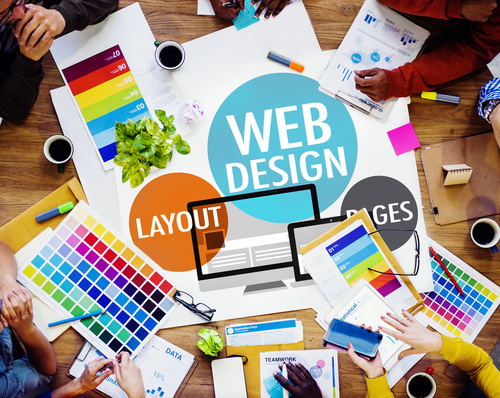Tube Rank: Your Guide to Video Success
Discover tips and insights for optimizing your video presence.
Web Wonders: Where Graphic Design Meets User Delight
Discover the magic of graphic design and user experience! Explore tips, trends, and inspiration that elevate your digital creations.
The Art of User-Centric Design: How Graphic Elements Influence Experience
User-centric design revolves around creating products and services that prioritize the needs and preferences of the end user. Graphic elements play a crucial role in shaping this experience, as they can influence how users interact with an interface. Typography, color schemes, and iconography not only enhance the visual appeal but also guide the users seamlessly through their journey. For example, using contrasting colors can draw attention to key features, while consistent typography establishes a hierarchy that makes information easy to digest.
Moreover, the interaction between graphic elements and user experience can be further enhanced by applying cognitive principles such as Gestalt theory. This approach emphasizes the importance of visual organization, helping users to understand the structure of content intuitively. By utilizing elements like visual grouping, proximity, and alignment, designers can create a harmonious interface that aids in information retention. Ultimately, when graphic elements are aligned with user needs and expectations, it fosters a sense of trust and satisfaction, making user-centric design an essential aspect of effective digital experiences.

Top 5 Graphic Design Principles to Enhance User Delight
Graphic design is an essential element in creating a delightful user experience. By focusing on key design principles, you can significantly enhance the way users interact with your content. Contrast is the first principle to consider; it helps to distinguish different elements on a page, drawing users' attention where it’s needed most. Additionally, utilizing balance involves distributing visual weight evenly across your layout, which fosters harmony and makes your design more aesthetically pleasing.
Another critical principle is alignment, which guides users' eyes in a logical flow and can dramatically improve navigation. The fourth principle, repetition, ensures consistency throughout your design, reinforcing familiarity and brand identity. Finally, white space shouldn't be overlooked; it provides breathing room within your layout, preventing clutter and allowing users to focus on key information. Applying these five principles—contrast, balance, alignment, repetition, and white space—will elevate your graphic design and enhance user delight.
How to Balance Aesthetics and Functionality in Web Design?
Balancing aesthetics and functionality in web design is crucial for creating an engaging user experience. A visually appealing website grabs attention, but it’s essential that design choices also serve a purpose. Start by defining the goals of your site and identify the key actions you want users to take. Use an orderly layout to guide visitors through your content, ensuring that aesthetic elements like color schemes and typography enhance readability rather than detract from it.
Equally important is the integration of responsive design, which ensures that your site looks great across different devices. This requires designers to prioritize functionality while maintaining a cohesive visual style. Conduct regular user testing to gather feedback on both the visual appeal and usability of your site. Incorporating this feedback allows you to refine your design and strike a perfect balance between form and function, ultimately leading to a more satisfying user experience.